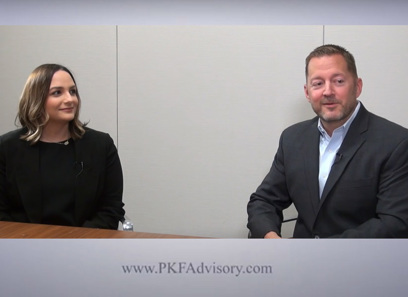M&A Outlook: Key Mergers and Acquisitions Trends to Watch in the Near Future
M&A Outlook: Key Mergers and Acquisitions Trends to Watch in the Near Future
Blog Article
Checking Out the Monetary and lawful Facets of Mergers and Acquisitions Transactions

Summary of Mergers and Acquisitions
Mergers and purchases (M&A) stand for a considerable section of business strategy, with many deals happening internationally yearly. These critical maneuvers are largely targeted at boosting affordable benefit, increasing market share, and attaining functional harmonies. M&An activities usually drop right into two distinct categories: mergers, where 2 firms integrate to develop a brand-new entity, and purchases, where one company purchases an additional, therefore preserving its identity.
The inspirations behind M&A deals are differed. Companies may seek these methods to diversify their product offerings, get in new markets, or take advantage of technological innovations (Economic factors influencing M&A). Furthermore, M&A can act as a means to remove competition or access to useful copyright
The procedure of M&An includes several phases, including target recognition, negotiation, combination, and appraisal. Successful deals need extensive due persistance to evaluate economic health and wellness, functional capabilities, and prospective responsibilities of the target business. Social placement between merging entities plays a critical role in guaranteeing a smooth shift and long-lasting success. As companies navigate the complexities of M&A, recognizing the possible obstacles and calculated imperatives is crucial for achieving preferred results in an increasingly competitive landscape.
Legal Framework and Compliance
Recognizing the legal framework and compliance requirements surrounding mergers and acquisitions is essential for browsing the intricacies of these deals - Economic factors influencing M&A. These procedures are controlled by a myriad of regulations at both federal and state degrees, which aim to ensure fair competition, secure stakeholders, and maintain company administration requirements
Trick regulatory bodies, such as the Federal Profession Payment (FTC) and the Securities and Exchange Compensation (SEC), implement antitrust laws and safety and securities guidelines, specifically. Companies need to conduct extensive due diligence to recognize any type of possible lawful obstacles, consisting of governing authorizations or anti-competitive concerns essential for an effective transaction.
Moreover, compliance with disclosure obligations is essential, specifically when public business are included. This consists of filing called for documentation and giving accurate information to shareholders and governing authorities.
Cross-border M&A deals introduce additional layers of intricacy, as varying legal criteria and regulative frameworks must be browsed. Engaging legal counsel with competence in mergings and acquisitions is essential to ensure adherence to relevant laws and to mitigate dangers. Thus, recognizing these lawful structures not only assists in compliance but also enhances the possibility of a effective and effective merging or purchase.
Financial Assessment Methods

Amongst one of the most common methods are the M&A Outlook for 2025 Reduced Cash Money Flow (DCF) analysis, which estimates the present value of expected future cash money flows, and the Comparable Business Evaluation (CCA), which examines a firm's worth about comparable companies within the exact same industry (Economic factors influencing M&A). In Addition, Criterion Purchases Analysis (PTA) examines historic purchase information to develop standards for appraisal
One more significant technique is the Asset-Based Assessment, which concentrates on the company's net possession worth, providing a tangible analysis of worth by taking into consideration both existing and lasting obligations and properties. Each strategy has its constraints and strengths, commonly differing in applicability relying on the nature of the market and the business context.
Eventually, employing a mix of these monetary appraisal strategies can produce an extensive understanding of a business's value, aiding to ensure that both sellers and buyers participate in fair and equitable purchases throughout the detailed process of mergers and procurements.
Due Diligence Process
Performing comprehensive due persistance is important to uncovering critical details concerning a target firm prior to wrapping up a merging or purchase. This process involves a detailed testimonial of the target's economic, operational, legal, and regulatory elements. The main purpose is to identify prospective threats and liabilities that may impact the deal's worth or post-merger performance.

Additionally, social due persistance evaluates the compatibility of the combining entities' business societies, which is crucial for a successful assimilation. The due diligence process needs partnership among numerous stakeholders, including legal advise, financial experts, and sector professionals, to make sure an alternative understanding of the target company.
Ultimately, the searchings for from due diligence inform negotiation techniques and might cause modifications in the acquisition cost or terms, consequently protecting the passions of the getting celebration and laying the groundwork for an effective merging or acquisition.
Post-Merger Combination Obstacles
While effective mergings and purchases frequently produce significant synergies and growth possibilities, the post-merger combination stage provides a myriad of obstacles that can undermine these benefits. One of the foremost problems is the cultural integration of the combining entities.
Another considerable challenge depends on lining up systems and procedures. The integration of disparate IT systems, operational techniques, and financial reporting can be time-consuming and complex, usually bring about functional disturbances. Furthermore, the failing to interact properly during this phase can result in confusion and misinformation amongst stakeholders, clients, and workers.
Financial integration also postures challenges, particularly in fixing up monetary plans and audit techniques. This imbalance can lead to disparities in economic reporting, affecting stakeholder self-confidence and market understanding.
Last but not least, governing compliance concerns may occur, demanding precise interest to legal demands. Addressing these obstacles promptly and tactically is essential for realizing the expected benefits of a merger or procurement, making sure long-lasting success and security.
Conclusion
Finally, the complex landscape of purchases and mergers demands a detailed understanding of both legal and financial elements. Adherence to regulatory structures guarantees conformity and minimizes anti-competitive threats, while durable economic appraisal techniques provide crucial insights into business well worth. A complete due diligence procedure is vital for determining potential obstacles, inevitably resulting in a lot more effective post-merger integration. Effective navigating of these elements considerably boosts the chance of attaining desired results in M&A deals.
The detailed landscape of mergings and procurements transactions demands a thorough understanding of both lawful structures and financial evaluation techniques. Regulative bodies, such as the FTC and SEC, impose stringent conformity demands to protect against anti-competitive actions, while durable economic evaluation methods are vital for accurately analyzing a business's value. Effective deals require thorough due persistance to assess financial wellness, operational capacities, and prospective liabilities of the target firm.Financial due diligence examines historic and projected economic statements, cash money flow evaluation, and tax conformity. Adherence to regulative structures guarantees conformity and alleviates anti-competitive risks, while robust financial assessment techniques offer vital insights into firm worth.
Report this page